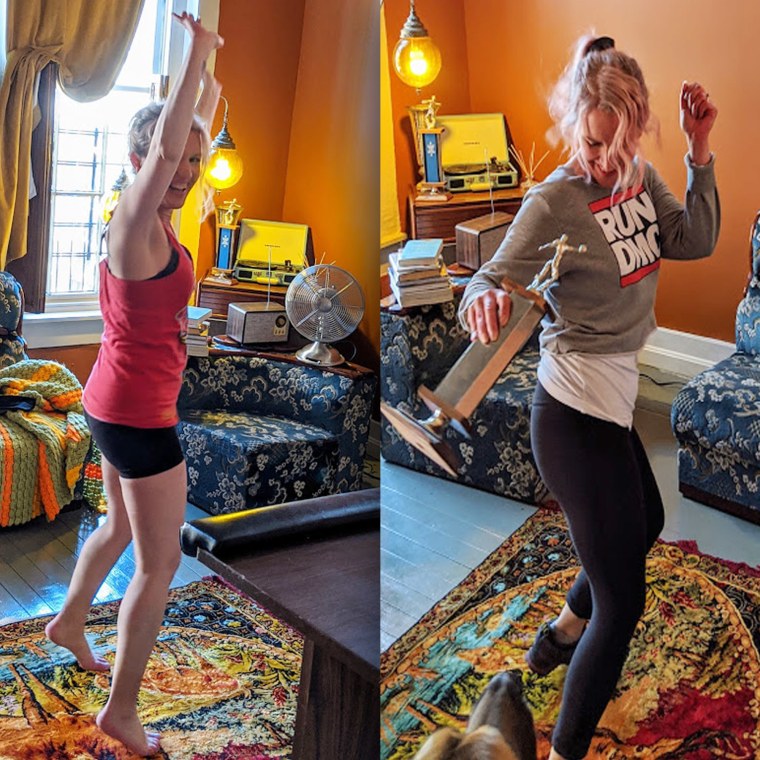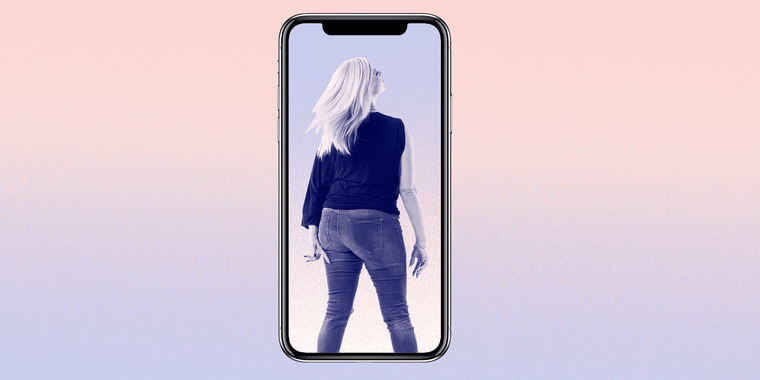I’m spinning around the room, my quarantine-pink ponytail whipping. A bluetooth speaker is booming house music. On my phone a cascade of hearts flutter up the screen where choreographer and dance instructor Ryan Heffington dances. The world has fallen apart outside, but I’m with 5,000 people around the globe — all dancing by ourselves, together.
It’s Heffington’s Instagram dance party, an hour of booty-thumping, soul-lifting, sweat-dripping ecstasy. Heffington, who also is the choreographer behind the hauntingly beautiful movements in Netflix’s “The OA,” started the sessions when the Sweat Spot, his dance studio in LA, had to close because of the pandemic.
It had been years since I’d done any sort of actual workout, but I cranked up the volume and prepared to give it a shot. An hour later I was belting out “We Are Family” with a vintage trophy in hand after Heffington yelled at us to grab a prop for a “microphone.” I strutted and whirled a jacket overhead, and shook my booty with absolute abandon. By the end, I’d spun around in a party of one — plus Heffington and the world, and come to a standstill, brimming with joy.
It’s true that Heffington’s passion and love for dance was contagious, his enviable talent inspiring, and the sense of community in a time of isolation a balm — and we know working out is a mood lifter — but how could a remote dance party offer such a profound sense of release and hope?
I wanted to understand more, so I spoke with both Heffington and Eleazar Cruz Eusebio, a psychologist and the executive director at Insight Neurodevelopmental Associates in Washington, D.C.
Dancing is special — and different from everyday exercise
“I think the world needs to dance,” said Heffington. “For me, it's always been therapy in my life. The world just needs this, you know, pandemic or not.” He pointed out that every culture dances, though in the U.S. it’s not as much a part of our culture after childhood. “As adults we've layered these responsibilities on ourselves, and we sometimes forget about joy, fun,” he said. “We need to have fun — and dance is the perfect vehicle to tap into that.”
What Heffington innately knows, science backs up. “Something like dance is kind of a miracle,” said Eusebio. “Research shows a 76% reduced risk of dementia in a 21-year study by the Albert Einstein College of Medicine so dancing is special. I think it's different from everyday exercise. It taps into physical, emotional [and] mental health and, really, just a personal sort of connectivity to the world and music.” There’s also something primitive about it, he said. “Dance goes back to prehistoric time. I mean before there was language people were communicating with dance.”
The dance party is tapping into that, but Eusebio emphasizes that there’s more to it. Heffington, he said, is able to reach 5000 people at a time, which contributes to a closeness that’s achieved through collective consciousness. This makes oxytocin, our feel-good brain chemical, surge like it does when we’re with someone we love. In fact, through the movement and the emotional connection to the music, to Heffington and our fellow dancers, all four key brain chemicals are firing, including serotonin, dopamine and endorphins, said Eusebio.
The connection might be via a stream of Instagram handles dropping emojis and love notes on screen, but it feels real.
Finding your place and keeping your focus
Ironically, it’s in the midst of isolation on a scale we’ve never known that some of us are finding the opportunity — at home alone — to let ourselves move like this. Part of me asks if it’s OK to feel good right now, when so much of the world is scared and hurting.
“I think what you're saying is, ‘Why would we dance at a time like this?’” said Eusebio when I mentioned my concern to him. “It's kind of like ... how could you not? It's almost like you have to be selfish about your mental health. You really just have to guard against anxiety and depression, and the only way to really do that is [to] be proactive ... And so whether that's dancing or doing online chat, whatever that thing is, I would say do more of it.”
At the beginning of the dance party when Heffington goes over the moves we’ll be using, he shows us how to do a turn sequence — and how to keep from getting dizzy when we spin. “Stop and look straight ahead,” he says. “Find a spot and capture that again as you turn. Keep your focus there almost the whole time.”

During our interview, Eusebio introduced me to a concept called proprioception. It’s how we perceive where our bodies are in space. This is key in the power of this dance experience, he said, because “right now we're mentally going through a lot, we're emotionally going through a lot, we're physically going through a lot.” Now, through dance, “it's like your body that you're physically having to live in, somebody is instructing you. And now you're having to see its position in space. That has an effect on our mind. If you think about it, how many of us know where we are in space?”
How many of us know where we are, period, these days? The last few weeks, we’ve been ricocheted in the grip of chaos and fear. Without being able to find a safe spot for our focus, it’s dizzying. But I’ve found my safe spot at Heffington’s dance party. That’s how I know where I am. And I know that he — and a world of others — will be there too.
Heffington’s dance parties take place Tuesday, Wednesday, Thursday, Saturday and Sunday. Check his Instagram for times. Sessions are free, but he welcomes donations that go toward his dance studio and employees.


